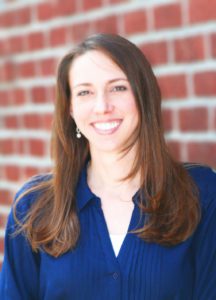Seasonal affective disorder seems like a trendy buzzword, but what IS it exactly?
We sat down for a Q&A session with Melinda Seley, a Licensed Professional Counselor, formerly of Avenues Counseling here in St. Louis.

St. Louis Moms Blog: What is Seasonal Affective Disorder?
Melinda Seley: It’s a recurrent depression related to changes in seasons that begins and ends at about the same time every year. For most, SAD symptoms start in the fall, last through winter, and end in the spring. While it is much less common, some people have a reverse pattern and experience SAD in the spring or early summer.
How is seasonal affective disorder different from major depression?
In order to be diagnosed with major depressive disorder (“depression”), five or more of the following symptoms must be experienced nearly every day during the same two-week period, and at least one should be either (1) depressed mood or (2) loss of interest or pleasure:
1) Depressed mood most of the day.
2) Loss of interest or pleasure in all/almost all activities most of the day.
3) Significant weight loss or weight gain / a decrease or increase in appetite.
4) A slowing down of thought and a reduction of physical movement (observable by others).
5) Insomnia or hypersomnia.
6) Fatigue or loss of energy.
7) Feelings of worthlessness or excessive or inappropriate guilt.
8) Diminished ability to think or concentrate, or indecisiveness.
9) Recurrent thoughts of death or suicide.
SAD is a subtype of depression. To be diagnosed with SAD, the full criteria for major depressive disorder must be met and the symptoms must coincide with a particular time of year for at least 2 years, during which the symptoms cannot be better accounted for by seasonally-related stressors (e.g. seasonal unemployment, seasonal work stress, trauma, bereavement, etc.).
Do researchers know what causes SAD?
The exact causes of SAD are unknown, but research has linked SAD to a biochemical imbalance in the brain induced by shorter daylight hours and less sunlight in the winter. The reduction in sunlight is thought to cause reduced levels of serotonin (a brain chemical that regulates your mood) and increased levels of melatonin (a chemical that regulates mood and sleep).
Risk factors for SAD include living farther from the equator where daylight hours are fewer in the winter, being young (18-30 years old) or female, and having a personal or family history of depression.
What are some ways to treat SAD?
SAD can be treated in a number of ways, including light therapy, talk therapy, and antidepressants; often the most effective treatment is some combination of these. While symptoms generally improve on their own with the change of season, symptoms often improve quicker or are less severe with treatment.

Light therapy is the most common treatment recommended for SAD. It involves exposure to a high-intensity light source (intended to mimic natural outdoor light) for a prescribed period of time once or twice a day. It is known to be very effective for those with mild symptoms of SAD by increasing a person’s serotonin levels (brain chemicals linked to mood and sleep, among other things), and appears to have no long-term negative effects. While it can be very effective, it is not always helpful on its own for everyone experiencing SAD.
Talk therapy has also been shown to be an effective treatment. Cognitive behavioral therapy (CBT), a form of talk therapy, is based on the premise that the thoughts we have influence our feelings and behaviors. The goal of SAD-specific CBT is to identify and incorporate enjoyable activities into daily life during the winter; challenge and modify negative thoughts (particularly those regarding winter); strengthen coping skills; and facilitate constructive self-talk. A study published by the University of Vermont showed that talk therapy reduced the recurrence and severity of symptoms for those suffering from seasonal depression in the present and, most notably, in future winters as well.
Antidepressants have been proven to be effective in treating SAD as well, particularly for those with severe symptoms. Selective serotonin reuptake inhibitors (SSRIs) are the type of antidepressant most commonly used to treat SAD, and they can be prescribed by a primary care doctor or psychiatrist. When taking antidepressants, it is important to remember that it may take several weeks to notice the full benefits of an antidepressant, it may take some trial and error to find the one that works best for you, and to not stop taking it on your own if you feel better.
When should you seek treatment?
It’s normal to feel a bit more melancholy some days (especially when you’re having to battle freezing rain to get to work!). However, if you find yourself feeling down or having lost interest in or pleasure in activities you normally enjoy for most of the day for more than 2 weeks, it’s important to seek help from a doctor and/or therapist. You should always seek help immediately if you are experiencing suicidal thoughts.
Are there any supplements that could help?
It is common for those with SAD to have low levels of Vitamin D, either due to insufficient exposure to sunshine or dietary intake. There are mixed conclusions as to whether Vitamin D supplementation is an effective treatment – some studies show it is as effective as light therapy, and others have shown no impact at all. Given that it could be effective, it is certainly worth trying.
What are some “easy fixes” you can implement to help SAD feelings?
While many might need more than an “easy fix” to adequately address their symptoms of SAD, there are some things you can try to minimize your symptoms:
- Make your environment brighter – keep the blinds/curtains open, sit by the window as much as possible, and install full-spectrum light bulbs in your house or office.
- Get outside as much as possible – even on cold or cloudy days, outside light can help.
- Exercise regularly – exercise reduces anxiety and stress and can lift one’s mood.
- Stay connected – even though it might be the last thing you want to do when feeling down, reach out to friends and stay connected to them so they can support you, make you laugh, and be a listening ear.
If you think you may be experiencing depression symptoms, we encourage you to speak with your doctor, or find a Licensed Professional Counselor to speak with. Depression and seasonal affective disorder doesn’t have to define you!

Melinda Seley is a Licensed Professional Counselor, formerly of Avenues Counseling in St. Louis.
The mission of Avenues Counseling is to provide vital mental health counseling services to all who have a need, regardless of someone’s ability to pay. We believe emotional wellness should be accessible to all.










